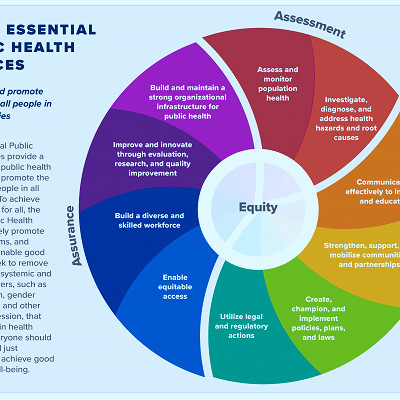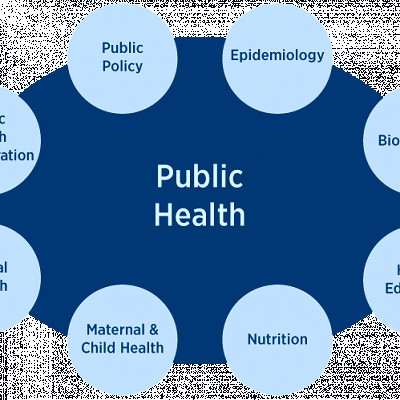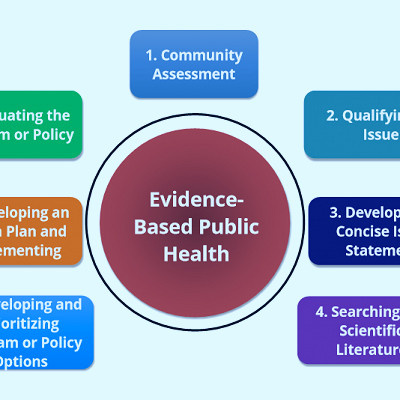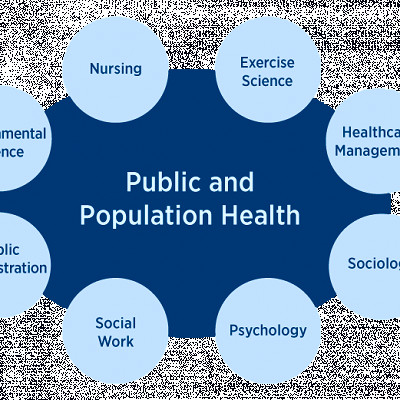 Jarlat Maletych/Shutterstock
Jarlat Maletych/Shutterstock
Features
Understanding Public Health Programs
Public health programs are systematic and organized efforts to improve the health of a community. They focus on preventing disease, promoting health, and prolonging life among populations through the organized efforts of society, organizations, communities, and individuals.
Importance of Preventative Measures
Prevention is a cornerstone of public health programs. By focusing on prevention, public health aims to reduce the burden of disease and disability in populations. This includes strategies such as vaccinations, regular health check-ups, and promoting healthy lifestyle habits like regular exercise and balanced diet.
Role of Health Education
Health education is an essential element of public health programs. It aims to improve health literacy, leading to better health decisions and behaviors. Health education can be delivered through various channels including schools, community events, media campaigns, and healthcare facilities.
Health Screening and Early Detection
Health screening is an effective tool used in public health to identify diseases early in their development. Early detection can significantly improve the prognosis of many diseases and conditions, such as cancer, heart disease, and diabetes.
Mental Health and Public Health
Mental health is an integral part of public health. Mental health programs focus on promoting mental wellbeing, preventing mental illnesses, and providing care and support for those with mental health conditions.
Importance of Environmental Health
Environmental health involves understanding the impacts of environmental and occupational hazards on human health. Public health programs aim to minimize these risks through policy, education, and intervention.
The Impact of Social Determinants
Social determinants of health include factors like socioeconomic status, education, neighborhood and physical environment, employment, and social support networks. Public health programs often focus on addressing these determinants to improve health outcomes.
Vaccination Programs
Vaccination programs are a primary tool in preventing the spread of infectious diseases. They are a cost-effective method of public health intervention and have eradicated or minimized many once-common diseases.
Emergency Preparedness and Response
Public health programs play a vital role in preparing for and responding to public health emergencies and disasters. This includes planning, training, and coordinating responses to prevent and minimize harm.
Health Policy and Regulation
Health policies and regulations contribute significantly to public health by setting standards for healthy behavior and the provision of health services. These can encompass a range of concerns from environmental health standards to regulations for safe food and water.
Addressing Health Disparities
Public health programs often include measures to address health disparities. These disparities can occur across different racial, ethnic, socioeconomic, or geographical groups, and addressing them forms a key part of achieving health equity.
Nutrition and Public Health
Good nutrition is a fundamental building block for good health. Public health programs often include nutrition education and initiatives to increase access to healthy foods.
The Impact of Physical Activity
Regular physical activity is essential for maintaining good health and preventing many chronic diseases. Public health programs often include initiatives to promote physical activity and reduce sedentary behavior.
Substance Abuse and Public Health
Substance abuse is a significant public health issue. Public health programs aim to prevent substance abuse, support those struggling with addiction, and minimize the societal impact of substance abuse.
Role of Public Health in Disease Control
Disease control is a central function of public health. This includes monitoring disease outbreaks, conducting research, implementing control strategies, and advising policy makers.
The Impact of Aging on Public Health
As populations age, public health programs must adapt to address the increasing prevalence of chronic diseases, the need for long-term care, and other health issues associated with aging.
Role of Technology in Public Health
Technology plays a growing role in public health, from electronic health records to telemedicine and health informatics. Technology can improve efficiency, accessibility, and quality of public health services.
Importance of Global Health
Global health issues, such as infectious diseases, malnutrition, and access to healthcare, have a significant impact on public health. Public health programs often collaborate internationally to address these complex challenges.
Health Economics and Public Health
Health economics is a crucial aspect of public health. It involves understanding how resources are allocated in healthcare, the cost-effectiveness of interventions, and how to maximize health outcomes with limited resources.
Future of Public Health
The future of public health lies in the continued evolution and adaptation of public health programs. This includes embracing new technologies, addressing emerging health challenges, and striving to achieve health equity for all.
Interesting notes and facts
1. Impact Beyond Medical Care: Public health programs are not just about treating diseases, they're about preventing them. These initiatives strive to improve overall health by focusing on factors like nutrition, exercise, and mental health. For example, programs promoting physical activity and healthy eating habits have been shown to reduce the risk of chronic diseases like obesity, diabetes, and heart disease.2. The Power of Vaccination: One of the most successful public health initiatives in history is the vaccination program. Vaccines have saved countless lives from diseases like polio, measles, and influenza. The World Health Organization estimates that vaccines prevent 2-3 million deaths globally each year.
3. Addressing Social Determinants of Health: Public health programs recognize that health is influenced by more than just biology and medical care. The social determinants of health, including income, education, and living conditions, play a major role in our wellbeing. Programs addressing these factors can help reduce health disparities and improve the health of entire communities.
4. Pandemic Preparedness: The recent COVID-19 pandemic has highlighted the importance of robust public health programs. From testing and contact tracing to distributing vaccines, these initiatives have been at the forefront of the global response to the pandemic. Their work is critical in preventing the spread of disease and saving lives.
5. Combating Tobacco Use: Public health programs have been instrumental in reducing tobacco use, one of the leading causes of preventable disease and death. Through education campaigns, policy changes, and cessation programs, these initiatives have helped to decrease smoking rates and improve the health of millions.
6. Improving Mental Health: Mental health is an often overlooked aspect of public health. However, programs aimed at improving mental health can have a significant impact on community wellbeing. These initiatives may focus on increasing access to mental health services, reducing stigma, and promoting healthy coping strategies.
7. Child Health and Development: Public health programs often target children, recognizing that early interventions can have lifelong benefits. Programs may focus on areas like childhood nutrition, vaccinations, and early childhood education, which can all play a critical role in a child's development and future health.
8. Focus on Prevention: The focus of public health programs is often on prevention rather than treatment. By addressing risk factors and promoting healthy behaviors, these programs aim to prevent health problems before they start. This approach not only improves health but can also save money by reducing healthcare costs.
9. Environmental Health Initiatives: Public health programs also address environmental health issues. This can include efforts to reduce pollution, ensure access to clean water and safe food, and address the health impacts of climate change. These programs recognize that a healthy environment is key to a healthy population.
10. Global Reach: Many public health programs operate on a global scale, addressing health issues that cross national borders. These programs may focus on infectious diseases, maternal and child health, or non-communicable diseases. Through international cooperation and collaboration, these programs can improve health for people around the world.
Vocabulary
- Public Health Programs – Initiatives designed to promote health and prevent disease among populations.
- Wellness – An active process of becoming aware of and making choices toward a healthy and fulfilling life.
- Nutrition – The process of providing or obtaining the food necessary for health and growth.
- Exercise – Physical activity that is planned, structured, and repetitive for the purpose of conditioning the body.
- Organic Food – Food produced without the use of chemical fertilizers, pesticides, or other artificial agents.
- Herbal Medicine – The use of plants or plant extracts for medicinal purposes.
- Homeopathy – A system of alternative medicine that treats 'like with like', using minute doses of natural substances.
- Acupuncture – A form of alternative medicine in which thin needles are inserted into the body.
- Yoga – A Hindu spiritual and ascetic discipline that includes breath control, simple meditation, and the adoption of specific bodily postures.
- Mindfulness – A mental state achieved by focusing one's awareness on the present moment.
- Detoxification – The process of removing toxic substances from the body.
- Antioxidants – Substances that inhibit oxidation, thereby preventing cell damage.
- Probiotics – Live bacteria and yeasts that are good for your health, especially your digestive system.
- Veganism – The practice of abstaining from the use of animal products.
- Gluten-Free Diet – A diet that excludes the protein gluten, found in grains such as wheat, barley, and rye.
- Meditation – A practice where an individual uses a technique to achieve a mentally clear and emotionally calm state.
- Naturopathy – A system of treatment that relies on natural remedies and the body's vital ability to heal and maintain itself.
- Holistic Medicine – A form of healing that considers the whole person -- body, mind, spirit, and emotions.
- Essential Oils – Concentrated plant extracts that retain the natural smell and flavor of their source.
- Superfoods – Nutrient-rich food considered to be especially beneficial for health and well-being.
- Aerobic Exercise – Physical exercise that requires pumping of oxygenated blood by the heart to deliver oxygen to working muscles.
- Mind-Body Connection – The belief in the ability of the mind to influence physical health.
- Raw Food Diet – A diet based on consuming unprocessed and often completely raw foods.
- Sleep Hygiene – Practices and habits that are conducive to sleeping well on a regular basis.
- Chiropractic – A system of complementary medicine based on the diagnosis and manipulative treatment of misalignments of the joints.
- Biofeedback – A technique you can use to learn to control your body's functions.
- Dietary Supplements – Products taken orally that contain a dietary ingredient intended to supplement the diet.
- Functional Medicine – A form of alternative medicine that focuses on interactions between the environment and the gastrointestinal, endocrine, and immune systems.
- Physical Therapy – The treatment of disease, injury, or deformity by physical methods such as massage, heat treatment, and exercise.
- Reflexology – A system of massage used to relieve tension and treat illness, based on the theory that there are reflex points on the feet, hands, and head linked to every part of the body.
- Ayurveda – The traditional Hindu system of medicine, which is based on the idea of balance in bodily systems.
- Hydrotherapy – The use of water to treat a disease or to maintain health.
- Osteopathy – A type of alternative medicine that emphasizes physical manipulation of muscle tissue and bones.
- Tai Chi – An ancient Chinese tradition that, today, is practiced as a graceful form of exercise.
- Reiki – A healing technique based on the principle that the therapist can channel energy into the patient by means of touch.
- Juice Cleanse – A type of detox diet that involves consuming vegetable and fruit juice for a short period of time.
- Intermittent Fasting – An eating pattern that cycles between periods of fasting and eating.
- Paleo Diet – A dietary plan based on the foods similar to what might have been eaten during the Paleolithic era.
- Ketogenic Diet – A low carb, high fat diet that offers many health benefits.
- Vegan Diet – A type of vegetarian diet that excludes meat, eggs, dairy products and all other animal-derived ingredients.
- Aromatherapy – The use of aromatic plant extracts and essential oils for healing and cosmetic purposes.
- Pilates – A system of exercises using special apparatus, designed to improve physical strength, flexibility, and posture.
- Biohacking – The process of making changes to your lifestyle in order to 'hack' your body's biology and feel your best.
- Restorative Yoga – A form of yoga that seeks to achieve physical, mental and emotional relaxation with the aid of props.
- 45 –



